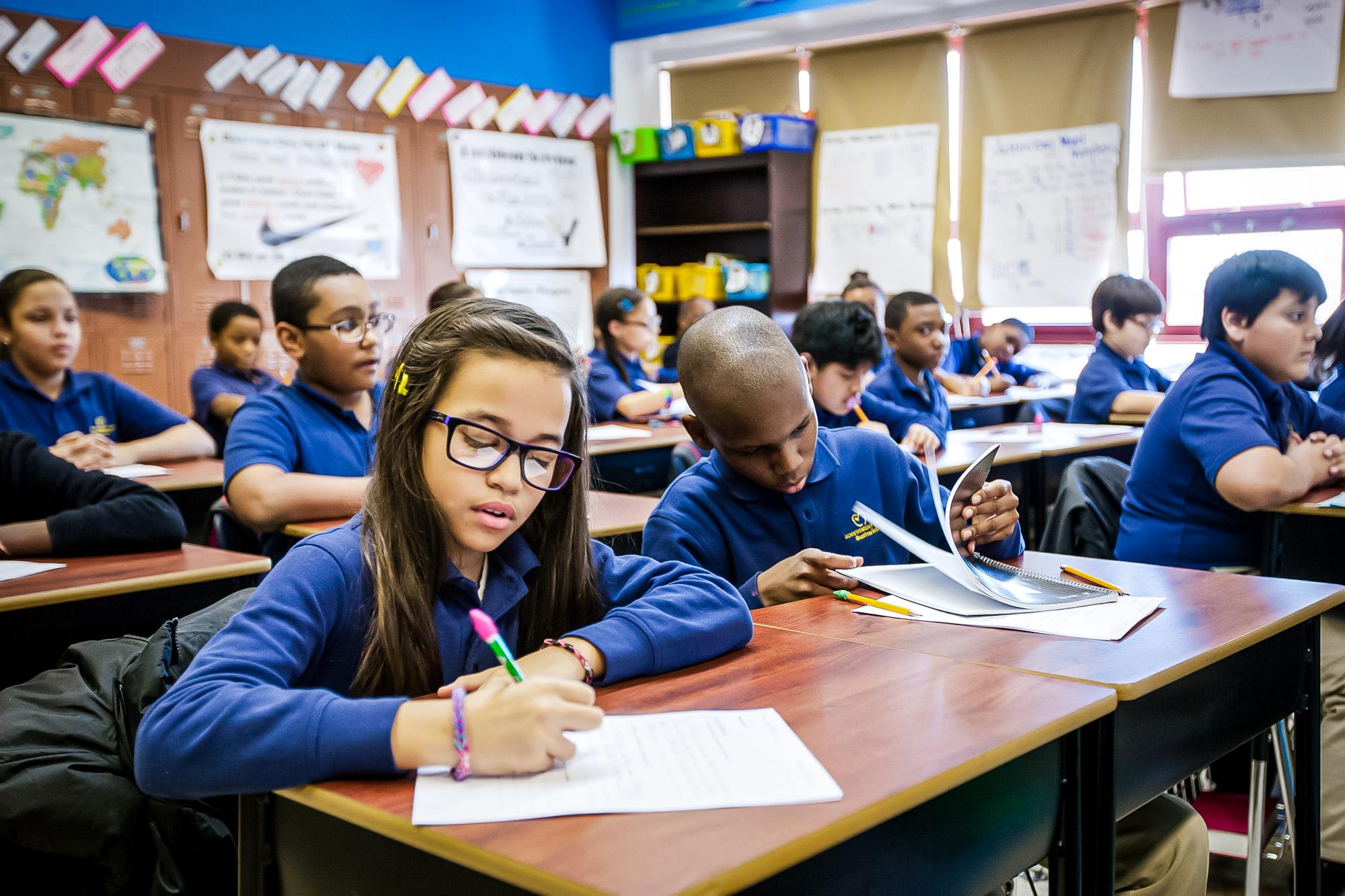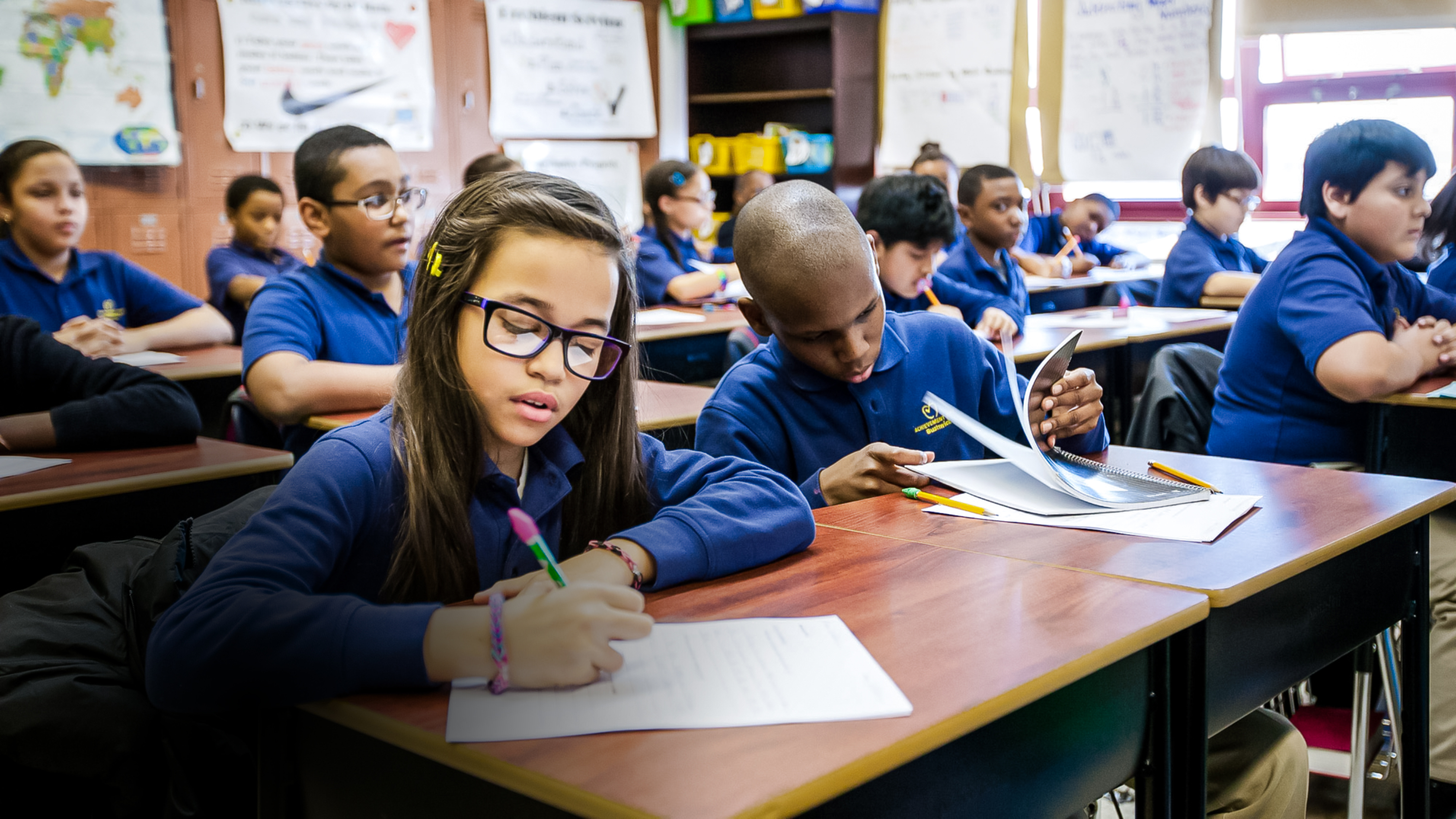Charter schools recently received a $60 million funding increase from the otherwise shrinking Department of Education, bringing federal support for the taxpayer-funded alternative to public schools to $500 million dollars ahead of the 2025–2026 academic year. It is a boost, although it is still much less than what lower-performing neighborhood schools get.
Education Secretary Linda McMahon said she views the increase as a wise investment: Charter schools across the nation are scoring better than traditional public schools in math, reading, and college readiness assessments.
“In most instances, they are outperforming their public schools in that area,” she told the Senate Appropriations Committee on June 3.
Closing the Achievement Gap
In 2024, Success Academy Charter Schools locations in New York City, which mainly serve low-income minority children, boasted state assessment passing rates of 83 percent in English language arts and 96 percent in math. That compares with 49 percent and 53 percent, respectively, for students in New York City’s traditional public schools.Even though funding for charter school students in Indiana is about $3,000 less per student than for traditional Indiana public schools, Signature is still able to require all students to participate in Advanced Placement or International Baccalaureate programs. Thirteen of the 97 students in this year’s graduating class received full, merit-based scholarships to prestigious colleges and universities, Jean Hitchcock, the school’s executive director, told The Epoch Times.
“The whole premise is, by keeping the bar high, everyone does better,” she said.
In Louisiana, the majority of students at the three schools in the Crescent City Schools charter network, which primarily serves black students, scored at or above grade level for English language arts and math in 2023, while most traditional public school students across the Pelican State scored below grade level.

The report, which involved data comparisons from more than 6.5 million students before the COVID-19 pandemic, states that low-income and minority students experienced more academic growth in charter schools. Eighty-three percent of charter schools produced reading scores that were equal to or better than their neighboring public schools, the report states, while 75 percent produced superior math scores.
“Perhaps the most revealing finding of our study is that more than 1,000 [charter] schools have eliminated learning disparities for their students and moved their achievement ahead of their respective state performance,” the report stated.
Similar, but Different
Charters, often formed by parents or teachers who are dissatisfied with their neighborhood schools, operate independently of local districts but still follow state and federal conditions to receive public funds. A charter school status can be revoked for poor performance.The schools may feature classroom or at-home instruction, or a combination of the two. Some allow parents to homeschool with charter school oversight.
They cannot charge tuition, and student admission is often based on a lottery if interest exceeds available slots.
The National Charter Schools Founders Library website hails Minnesota as the birthplace of charter schools. Education researchers in the North Star State published scholarly articles about the concept in the 1970s. Public policy was developed over the course of a decade and made its way to the state Legislature, which included charter school funding in a June 1991 education law.
The City Academy in St. Paul, Minnesota, became the first U.S. charter school when it opened in September 1992. The same month, California Gov. Pete Wilson signed a law authorizing 100 charter schools in his state.
At the national level, meanwhile, then-Arkansas Gov. Bill Clinton touted the charter school concept during his presidential campaign. As president in 1994, he championed the federal Chartering Grant Program.

Since 2005, the number of charter schools has more than doubled, while the number of students served by them has more than tripled, according to data from the National Alliance for Public Charter Schools and National Center for Education Statistics. Currently, in the United States, 8,150 charter schools are educating 3.8 million students.

Most charters are still self-managed or “freestanding,” the National Alliance stated, but the share of charter schools managed by external organizations is increasing, with 32 percent contracting with nonprofit management companies and 11 percent with for-profit companies.
Hitchcock said her institution does not have a library, cafeteria, or gym. Not only does that keep operating costs down, but it also requires teenagers to interact with the community at large as they visit local parks, restaurants, the municipal library, and the Evansville YMCA during the school day.
“They become responsible citizens,” she said, noting that the students give back to Evansville through the school’s required community service at city institutions.

Opposition in Face of Diversity, Rising Enrollment
In November 2024, the National Center for Charter School Accountability and the Network for Public Education released a report titled “Doomed to Fail,” detailing charter school closures between 1998 and 2022.According to the report, within that 23-year period, 1.1 million students were displaced as 36 percent of the 12,000 charter schools that had opened shut down. Low enrollment was the most common reason for the closures, followed by mismanagement or fraud, and then financial problems. Poor academic performance accounted for 13.7 percent of the closures.
The Memphis Academy of Health Sciences, which opened in 2010 and closed in 2022, is the most troubling example, according to the report. Administrators there stole the school’s money to take trips to Las Vegas, buy a hot tub, pay for child care services, and purchase NBA tickets.
“There is no way of knowing when or if a nearby charter school might put 600 young elementary school children on the street,” the report stated.
Charter schools are subject to lax supervision, cronyism, and mismanagement, according to the report, because, unlike traditional public schools, they do not require a voter-elected board. The report authors called on the Department of Education to cancel the 1994 program that has funded charter schools.
The National Alliance for Public Charter Schools, in an emailed response to The Epoch Times, said the “Doomed to Fail” report fails to acknowledge that school closures are actually the result of accountability and, while lamentable, are the best option if students are not served well.
“A school closure is a disruption to students, but not as much of a disruption to the futures of those students when they can’t read or do basic math,” the organization stated.

The organization has traditionally viewed school choice as a threat because alternatives to neighborhood schools assigned by ZIP code receive funding—albeit less per student—that would otherwise go to traditional public districts.
House Democrats, during a May 14 Committee on Education and the Workforce hearing on the future of charter schools, doubled down on claims that these types of schools discriminate, despite the vast and contrary amount of data on enrollment and achievement by race.
What Is Ahead
In April, a group of Republican lawmakers, including Rep. Kevin Kiley (R-Calif.), proposed the High-Quality Charter Schools Act, which would provide tax credits for charitable donations toward the startup costs of nonprofit charter school organizations.“It’s uncommon to find widespread education innovation that succeeds, helping millions of students year after year,“ Kiley said during the May 14 Education and the Workforce hearing. ”But charter schools do exactly that.”
Rep. Burgess Owens (R-Utah), a bill co-sponsor, called school choice “the civil rights issue of our time.”
“Our nation’s future will be determined by whether we win the fight to ensure that every child—no matter their ZIP code—has access to high-quality education,” Owens said.

That includes a greater share of tax dollars for charters in Colorado, Indiana, Florida, and Wyoming, and state grant or tax credit increases in Idaho, Illinois, Missouri, Tennessee, Texas, and Utah.
Meanwhile, the Charter School Growth Fund, a private organization, supported more than 1,000 schools in 2024 to the tune of $192 million, according to its website. By 2030, it aspires to serve more than 1 million students by supplementing government funding for existing charter schools.
Based on current trends tracked by the National Alliance for Public Charter Schools, 10 percent of U.S. public school students will be enrolled in charters by the end of the decade.
Susan Pendergrass, a fellow at EdChoice, a school choice policy and advocacy organization, said charter schools are a middle ground at a time when public school performance is declining and taxpayer-funded vouchers for private schools, most of which are religious, are staunchly opposed by Democrats.
Moreover, she noted, the demand for alternatives to neighborhood schools far exceeds the supply.
In light of that need, a charter school is “a great compromise,” Pendergrass told The Epoch Times.
“It can be a real lifeboat,” she said.












